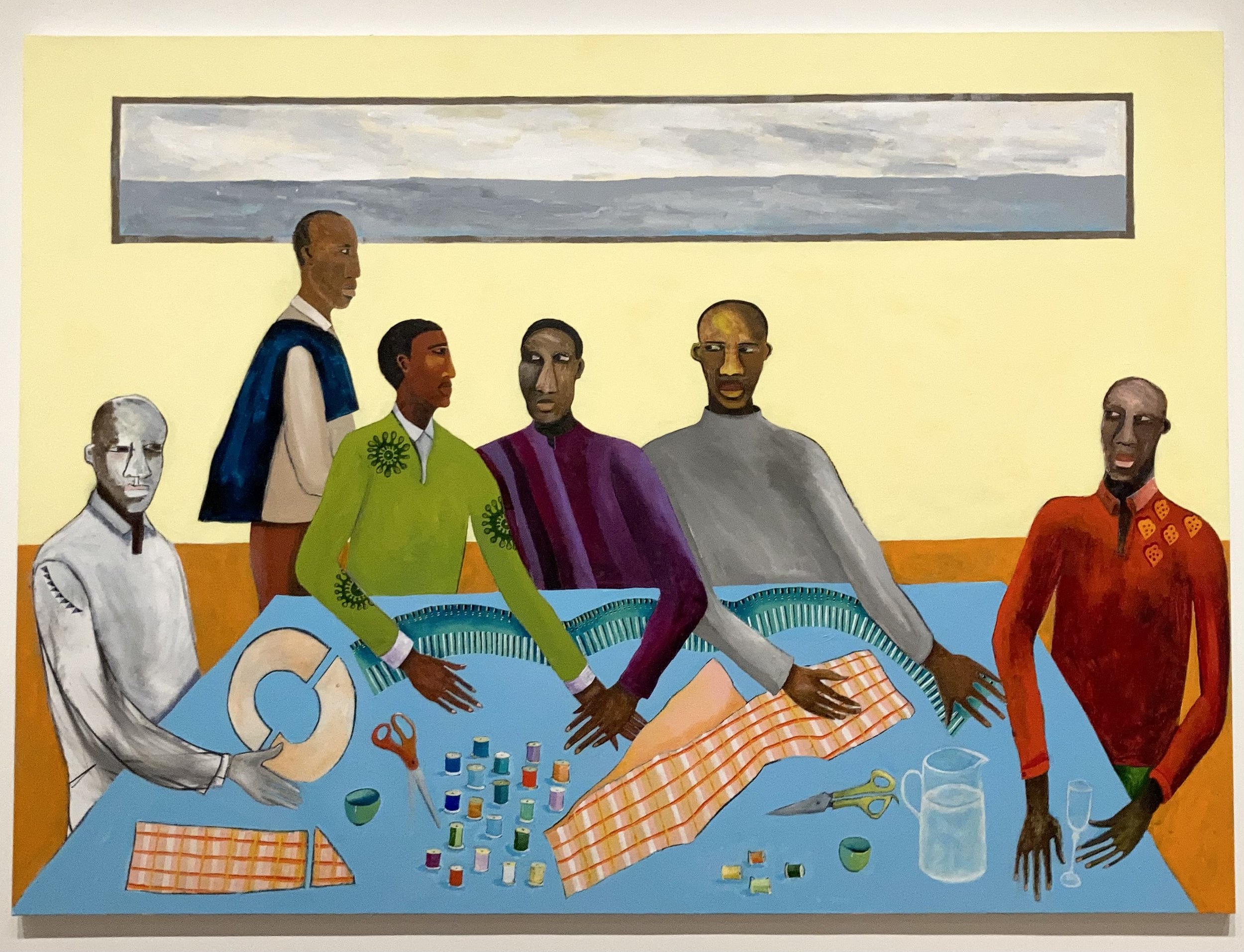Exhibition review - Lubaina Himid at the Tate Modern
Before she won the Turner Prize in 2017, Lubaina Himid was a respected British artist with a consistently strong output - fostered in the Black Art movement in the 1980s. Now forces, including this retrospective, conspire to make her an international art star, writes Henry Tudor-Pole, who visited the Tate Modern.
Writers will never tire of repeating that Himid studied theatre design, because throughout her career she has constructed spaces in which viewers and the characters in her paintings interact. Instead of rewarding a close, contemplative mode of looking, Himid’s paintings are confrontational, bouncing the viewer’s attention back to themself. This is one of her explicit goals: ‘The experience should be similar to entering a room and deciding what you’re going to do, how you will react and interact.’
With sound works and large-scale sculptural installations, this retrospective is more interactive theatre than painting exhibition. In Himid’s colourful, opaque world, characters are suspended in moments before action; what they will do next is uncertain. There are stars: the glossy red lipstick of one woman at The Operating Table is disarmingly lifelike and shows that, despite the no-frills directness of many of the acrylic paintings, Himid has got ‘touch’. The woman with lipstick is one of a few wonderfully memorable characters in the show, whose faces and poses suggest complex psychological interiors, amongst a majority who are lacking definition, supernumerary.
In my role as student reporter, I moved through the galleries interviewing the actors. Two paintings spoke more than the others, about themselves, each other, the show, and the world behind its walls. They questioned me, too, about what I was doing there.
The Operating Table (2019) shows three black women sitting at one end of a round table in an interior. There’s a jug on the windowsill and a big surgery light suspended above them. Spread out on the table in front of them is a map showing their own theatre of operations: districts of a town or small city with trees and a large body of water. One woman is about to cast a die onto the map from her palm; the other two are unsure about it. On the wall nearby are the words ‘What Happens Next?’ These women play more than an innocent game of Risk.
I joined them at the table. They asked me: are you a collaborator or a competitor? I wanted to join their side but I didn’t know how, not being privy to their aims and methods. One of them gestured insistently at the body of water on the map. Water, especially the sea, is a motif that occurs throughout Himid’s work. In her paintings, Himid often refers to the sea’s traumatic history; its place in wars and the transatlantic slave trade. How were the women in The Operating Table planning on renewing water for the future? I moved on through the exhibition, but I kept returning to this painting: what would this city look like after these women - who so rarely get a say in such things - had made their intervention?
Sitting across from Six Tailors (2019), I could see cotton spools, scissors and textiles laid out before the six men, and a jug of water. Through a horizontal window was the grey sea heavy above them. There was a conversation happening between the man in green and the man in purple, which the others were listening to, and one of their hands rested on top of the other’s, as if stopping his action. I asked what they were making, but like the women at the Operating Table, they didn’t agree with each other and little was getting done.
Lubaina Himid, Six Tailors (2019) - Tate Modern (Photo by Henry Tudor-Pole)
Risk-taking, town-planning women and men who make clothes: Himid inverts gender expectations in her propositional art, and hopes to make the world anew with the help of its viewers. She evokes the dissonance of living in a world not made for the benefit of the characters in her paintings, whom she portrays as simultaneously active and hesitant. Several motifs run through the show like threads in a narrative - the sea, textiles, abstract grid patterns, empty buildings, suspense. These invoke black histories which are traumatic, but also alive with materials for reshaping the world. Though it surveys with an undeceived eye, Himid’s art is cautiously optimistic.
It was a shame that the curators roped off the bus shelter structure at the end of the exhibition: I’m sure the point is that we can sit in it and ponder the question Himid wrote there (‘do you want to live an easy life?’). This left the self-questioning of the visitors curiously unmatched by the installation itself. And this was sometimes the case with the other artworks too. Himid’s exhibition feels provisional, it feels incomplete, and perhaps it’s meant to. But as a whole this can leave it, in stark contrast with Himid’s decisive palette, appearing a little faint.
Lubaina Himid is on show at the Tate Modern until 3 July 2022.


